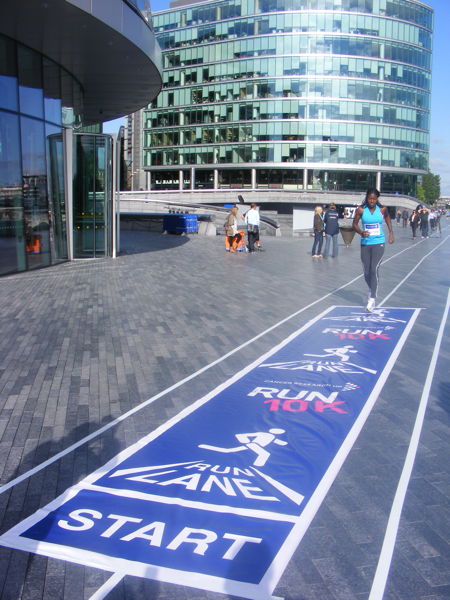Photography restrictions outside City Hall ‘shocking’, London Assembly committee told
A leading London property developer has described how he was challenged by the More London estate's security guards when he tried to take photos of City Hall.

The More London estate has been put under scrutiny by the London Assembly's planning and housing committee as part of its investigation into the private management of publicly accessible space.
On Tuesday morning the committee heard from a panel of experts who advised members on what London's city-wide government could do to ensure that open spaces in new developments are managed sensitively.
"I thought it was mildly ironic that this building, the symbol of public government in London, is actually on a private estate," said Eric Reynolds who led the development of Camden Market.
Professor Matthew Carmona from University College London offered a different view: "To me it's not about who owns the space: the fact that this space out here is owned privately is neither here nor there.
"It's about who has the right to use it, how they can use it and how is that managed. It's about the public sector ensuring that when permission is given for these places that those permissions adequately ensure that the public has the right to use these spaces and will not be kicked off for skateboarding or selling The Big Issue."
Criticism of the management regime of the open space around City Hall itself was led by the Green Party's Jenny Jones AM. She said: "More London I think behaves appallingly towards us politicians because they own this space.
"They refused for years to put some bike parking in for this building. They finally did [install bike racks] – with huge resistance and bad will – and as soon as they possibly could the moved it onto the park, so we lost a few square metres of park because of More London which I deeply resent."
In a later intervention she highlighted the problems faced by television crews reporting on the workings of London government. "It has taken us eight years to negotiate with More London so that we politicians can do a TV interview outside our own building," she said.
She added: "More London sells the filming rights, so it's their narrow interests against the public good."
Robert Evans, executive director of Argent Group which is developing the King's Cross Central scheme, said he agreed with Jenny Jones' concerns about the management of More London.
"Standing here and taking photographs of City Hall about six months ago I was stopped," he recalled.
"It is a shocking situation where you are taking a photo of the city hall of your city and you are stopped by a private security guard."
Peter Bishop, design supremo at the London Development Agency, had some withering remarks to make about More London.
"I think public space is one of the essential components of a city," he said.
"It is public, it's civic, and within the realms of the law it is available for the citizen on a completely unrestricted basis.
"I think that's one of the building blocks that you should start with in designing and managing cities.
"At the moment there is an erosion of that public space going on. It's not necessarily a new phenomenon but I think that the whole drive through the 20th century was one of public adoption and public ownership of public areas.
"That was a good principle for various reasons. First of all it is about 'civicness' and the role of the citizen in the city.
"Secondly … it's about the feel of how you expect to be treated as a citizen. I think there is a very, very significant difference between the feel of More London … and walking down Tooley Street."
Peter Bishop later warned that although developers always claim that they aspire to 'quality', the commercial imperative for open spaces that are cheap and hassle-free to manage can be in conflict with the public aspiration for something more characterful and flexible.
"Looking out of the windows at More London, I think that as a piece of landscaping – with the way that The Scoop is used – it's fine," he said.
"It is a bit joyless at times. You can't chain your bike to the railings and it is pretty rigidly prescribed what you can and can't do.
"It works fine for More London but I'm not convinced I want it replicated across the part of London I live in."
Comments
Share
The SE1 website is supported by people like you
More to read
- Spooks movie features SE1 locations 11 May 2015
- Mayor of Southwark unveils Queen's Walk sundial 21 Mar 2015
- Estate agents and bankers triumph in SE1 pancake races 4 Mar 2014
- Kuwaitis buy back More London after 15 years for reported £1.7 bn 10 Dec 2013
- Simon Hughes hosts round-table discussion with local businesses 4 Nov 2013
- Giraffes take up residence at More London 10 Sep 2013
- 'Extreme dancers' leap from Millennium Bridge to launch Surprises: Streb 15 Jul 2012
- Mayor questioned on access to More London for Jubilee Pageant 11 Jul 2012
- Peckham photographic portraits exhibited in Bermondsey Square 12 Jan 2012
- London Bridge Station redevelopment gets green light from Southwark councillors 21 Dec 2011
Follow us
Email newsletter
For the latest local news and events direct to your inbox every Monday, you need our weekly email newsletter SE1 Direct.

